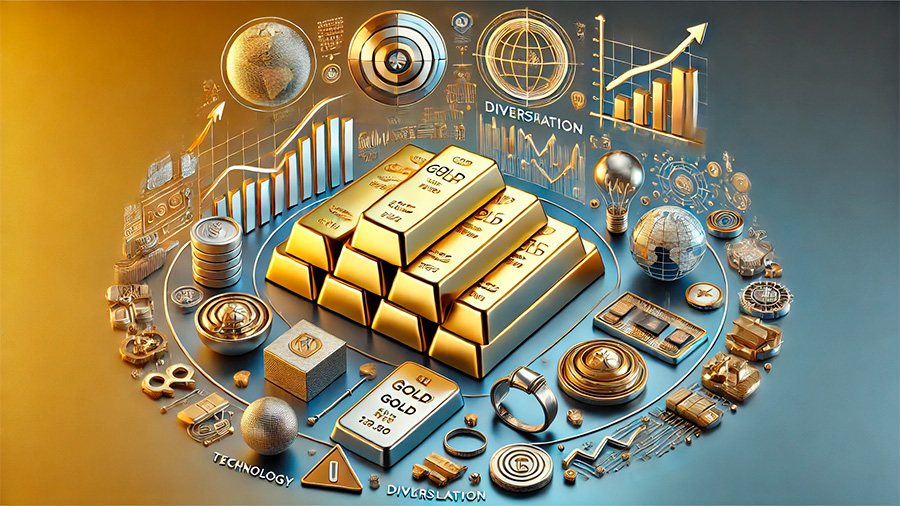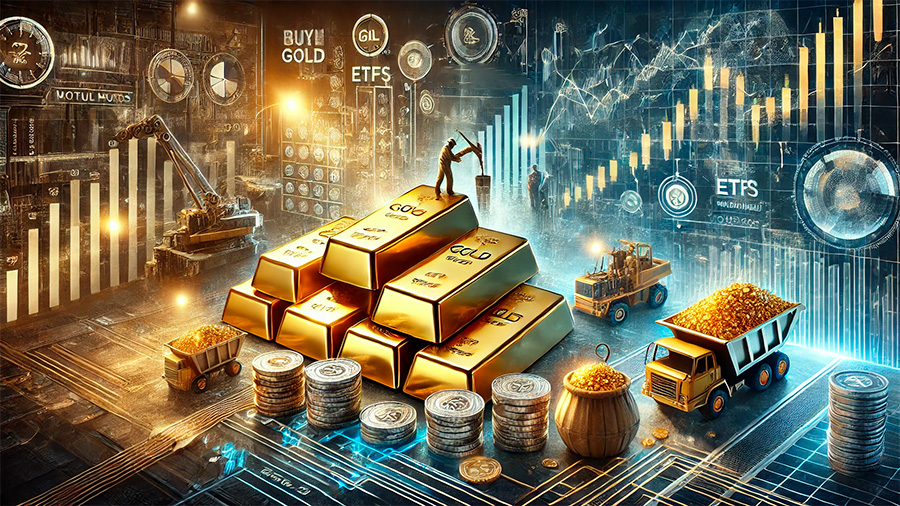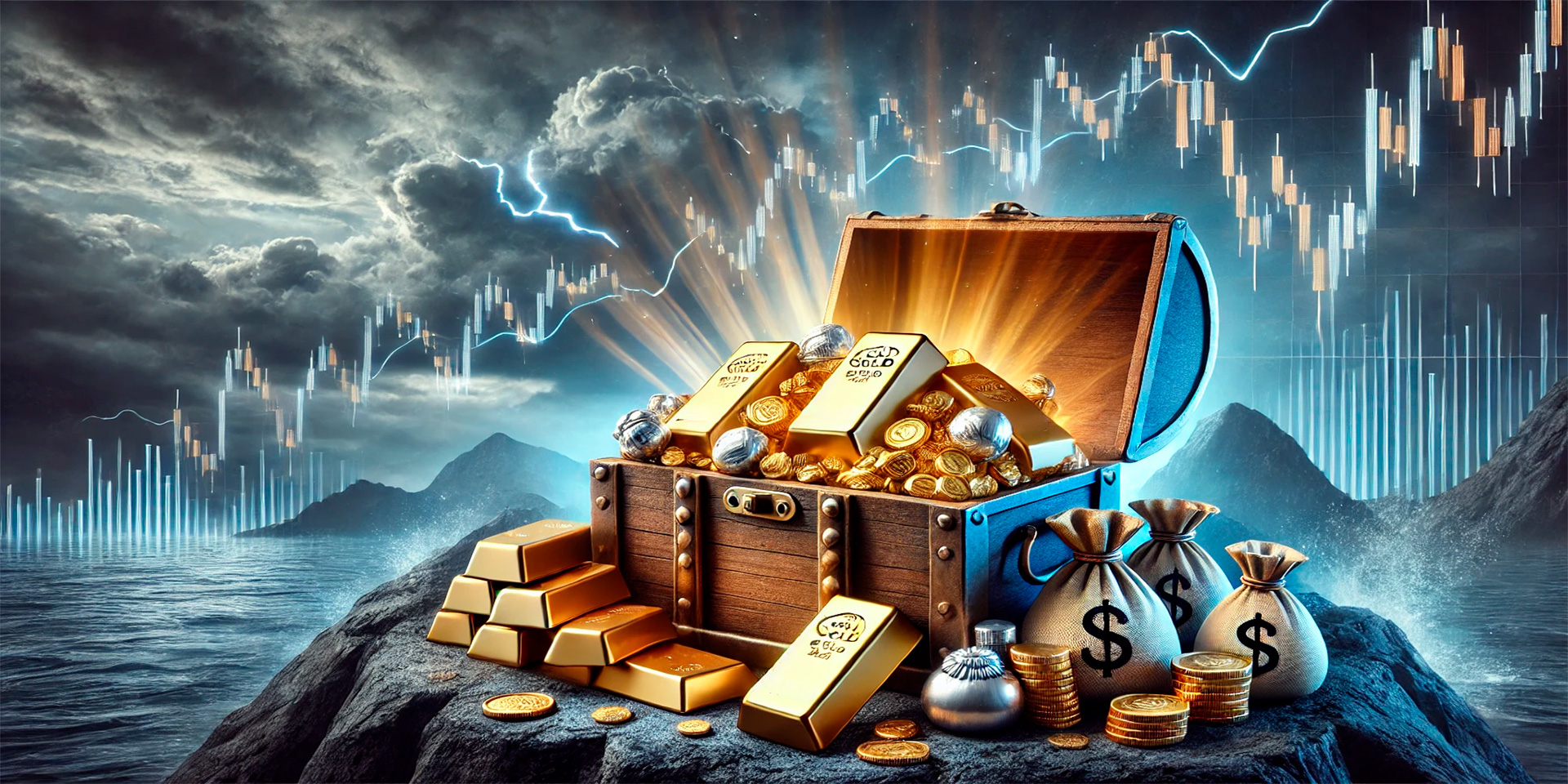During times of financial uncertainty or economic stagnation, many investors seek safe-haven assets that can protect their wealth. One of the most reliable options for safeguarding assets in turbulent times is investing in precious metals like gold, silver, platinum, and palladium. These metals have stood the test of time as storehouses of value, offering stability and security when other investment vehicles, such as stocks or bonds, face significant volatility.
This article will explore the role of precious metals in maintaining financial stability during economic crises, how they act as a hedge against inflation, and why they remain a crucial part of a diversified investment portfolio.
The Role of Precious Metals in Times of Economic Crisis
Economic crises, whether caused by market crashes, geopolitical tensions, or pandemics, often lead to widespread uncertainty and fear. In such situations, precious metals are widely viewed as safe-haven investments due to their intrinsic value and limited supply. Unlike fiat currencies, which can be devalued by inflation or poor monetary policy, precious metals are physical assets with a longstanding track record of maintaining value over time.
1. The Historical Importance of Precious Metals
Throughout history, precious metals have been used as a store of value and a medium of exchange. Gold, in particular, has served as the basis for the global monetary system for centuries. Even during times of economic collapse, people have turned to gold and silver as a way to preserve wealth, making them a trusted asset during periods of economic crises.
Key historical examples:
- The Great Depression: During the 1930s, the value of the U.S. dollar declined significantly, but gold maintained its value as a hedge against inflation, leading many investors to turn to the precious metal.
- Post-2008 Financial Crisis: In the wake of the global financial meltdown, gold prices surged as investors sought refuge from collapsing stock markets and government bailouts.
- The COVID-19 Pandemic: Amidst the economic turmoil triggered by the pandemic, gold once again proved its worth, rising to new highs as a result of government stimulus packages and widespread financial instability.
2. Precious Metals as a Hedge Against Inflation
Inflation is one of the key concerns during economic crises. As central banks inject liquidity into the market to stimulate growth, the value of fiat currencies can erode, leading to higher prices for goods and services. Precious metals, on the other hand, are seen as a hedge against inflation due to their limited supply and intrinsic value.
How precious metals protect against inflation:
- Intrinsic value: Unlike paper currencies, the value of precious metals is driven by their physical properties and scarcity. This ensures that they maintain value even when the purchasing power of fiat currencies declines.
- Global demand: Precious metals have consistent demand worldwide for use in industries like jewelry, technology, and manufacturing, further supporting their value during inflationary periods.
- Gold as a traditional hedge: Gold, in particular, has long been seen as a safe asset during inflationary periods. Its value tends to rise when inflation expectations grow, providing a stable store of value for investors.

Why Investors Turn to Precious Metals During Economic Stagnation
Economic stagnation, marked by slow growth, high unemployment, and low consumer confidence, often leads to uncertainty in financial markets. During such periods, stock markets can become volatile, and bonds may offer low returns, prompting investors to seek more stable investment options. Precious metals offer a viable solution for investors looking to protect their wealth from the negative effects of economic stagnation.
1. Diversification and Risk Mitigation
One of the most important strategies in investing is diversification—spreading investments across different asset classes to reduce risk. Precious metals are a key component of a well-diversified portfolio, especially during periods of economic stagnation. Unlike stocks or bonds, the value of precious metals does not typically correlate with the performance of the broader financial markets, making them a valuable hedge against market downturns.
How precious metals enhance portfolio diversification:
- Low correlation with stocks and bonds: Precious metals typically have a low or negative correlation with other asset classes, meaning they often perform well when stocks and bonds underperform.
- Reduced volatility: Precious metals tend to be less volatile than equities, providing a more stable store of value in uncertain times.
- Safe haven during market downturns: When stock markets are in decline, precious metals tend to rise, making them a reliable asset for protecting capital during bear markets.
2. Global Demand for Precious Metals
The global demand for precious metals, particularly gold and silver, continues to rise due to their importance in various industries, including technology, manufacturing, and healthcare. This consistent demand helps stabilize prices and ensures that precious metals remain valuable assets for investors.
Industries that rely on precious metals:
- Technology: Precious metals such as silver and platinum are used in electronics, solar panels, and electric vehicle batteries, driving demand in the tech sector.
- Jewelry: Gold and silver are integral to the global jewelry market, supporting their value even in times of economic downturn.
- Healthcare: Platinum is used in medical devices and cancer treatments, creating steady demand for this metal.

Investing in Precious Metals: How to Get Started
Investing in precious metals can be done in several ways, including purchasing physical gold and silver, buying exchange-traded funds (ETFs) that track the price of these metals, or investing in mining stocks. Each option has its own advantages and considerations, and investors should carefully evaluate their risk tolerance and financial goals before deciding on the best strategy.
1. Buying Physical Precious Metals
Purchasing physical gold, silver, platinum, or other precious metals is one of the most direct ways to invest. Investors can buy bullion bars, coins, or other forms of physical metals, which can be stored securely at home or in a vault. This option offers the benefit of owning tangible assets, but it also requires extra security measures and may incur higher premiums compared to other methods.
2. Precious Metals ETFs and Mutual Funds
Exchange-traded funds (ETFs) and mutual funds that invest in precious metals or mining companies offer a more liquid way to gain exposure to the precious metals market without having to physically store the metal. These funds track the price of metals or invest in mining stocks, providing diversified exposure to the sector.
3. Investing in Precious Metal Mining Stocks
Investing in mining companies that extract and produce precious metals is another way to benefit from the precious metals market. These stocks can offer significant growth potential, as mining companies may experience higher profits when the prices of metals rise. However, they also carry risks associated with the performance of individual companies and the volatility of the mining sector.
Conclusion
Precious metals such as gold and silver play a crucial role in providing stability and security during times of economic crisis and stagnation. As reliable stores of value, they offer protection against inflation, market volatility, and currency devaluation, making them a safe-haven investment during financial uncertainty. Whether through physical purchases, ETFs, or mining stocks, investors can use precious metals to diversify their portfolios and mitigate the risks associated with economic downturns. By understanding the role of precious metals and incorporating them into a well-balanced investment strategy, investors can ensure their wealth remains secure in challenging economic conditions.

